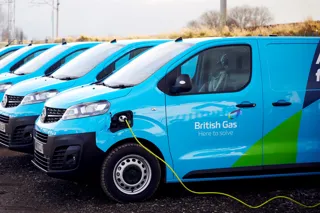Paul Holland, managing director for UK Fuel at Fleetcor
The UK vehicle market has been heavily impacted by the pandemic, with a 29% decline in sales across 2020, according to the Society of Motor Manufacturers and Traders (SMMT).
However, used car sales have increased as businesses are constrained by tighter budgets. Consequently, Auto Trader saw used car prices rise 7.6% in September 2020 - the highest monthly increase on record.
Keeping your fleet serviced and in good working order is pivotal to staying on top of finances and reducing expenditure.
Of course, for those that have chosen to purchase used cars, vans or HGVs, maintenance will be critical to keeping their fleets on the road.
Therefore, it is important to understand how companies could be losing money when it comes to vehicle maintenance, and here I’ll offer my key steps in servicing vehicles efficiently.
Why does vehicle maintenance cost so much?
Firstly, if maintenance is ignored, this can lead to reduced fuel efficiency.
Dirty fuel injectors and air cleaning elements within a vehicle’s engine will affect its fuel burning processes during combustion, and more fuel will be needed to produce the same amount of power.
Similarly, tyres that are worn or at an incorrect pressure can negatively impact fuel economy.
The poor application of maintenance techniques and processes can also lead to high costs.
This is because fleet managers and staff can sacrifice long periods of time trying to ascertain which vehicles are running inefficiently, in turn increasing maintenance costs.
Fleet operators should reduce such time and administrative burdens associated with booking in maintenance.
Finding the best prices to have the work done will also be hugely beneficial, in helping to save money in this economic downturn.
How to increase efficiency
Technology and data are some of the greatest tools that companies can utilise to increase efficiency.
Having access to data associated with mileage, the number and frequency of fuel stops, maintenance logs and the vehicles within a fleet, is hugely advantageous for any fleet business.
They must work closely with their fuel card providers which have access to comprehensive Management Information (MI) protocols.
This data can be analysed, allowing businesses to take control of costs and work out which vehicles are inefficient.
Moving digitally to manage vehicle maintenance
Fleet managers can also use digital administration solutions that oversee fuel, servicing and other vehicle related costs to control expenditures at ease.
These solutions give businesses access to dashboards, enabling them to set reminders for booking garage visits and approving of service, maintenance and repair (SMR) work on vehicles.
Therefore, businesses can ensure that this process is done as efficiently as possible, that MOTs are carried out on time and vehicles are safe to be back on the road.
How to find the right network
Fleet managers should consider a fuel card provider that has a solid network of franchised and independent garages nationwide, including tyre and glass specialists.
They often offer discounts on maintenance and repair work from their partners, such as pre-negotiated rates, to bolster cost savings for fleet businesses.
With an advanced provider, authorisation and invoice processing can take place through one consolidated platform reducing stress, administration and the time needed to manage vehicle maintenance, thus improving overall efficiency and cost management.
Preparing for the future
As economic uncertainty has carried over to 2021 due to COVID-19 and Brexit, it is essential that businesses control their processes and maintain efficiency.
Part of this is facing up to the economic downturn we have found ourselves in and knowing the best ways to save money.
Streamlining vehicle maintenance should not be overlooked in this regard – it may go a long way towards keeping businesses healthy and vehicles on the road.



















Login to comment
Comments
No comments have been made yet.